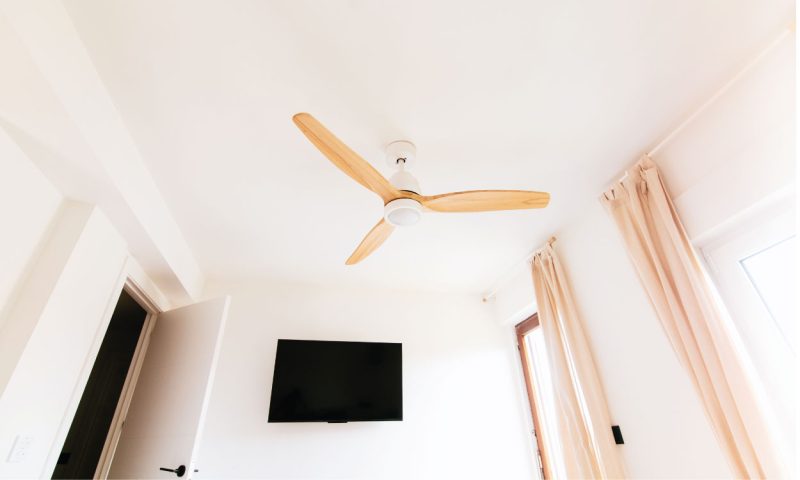Time to Rethink the Way You Upgrade Your Home in 2025

What if improving your home wasn’t about spending more, doing more, or keeping up with the latest interiors trend? What if it was simply about making your home work better and work for you, your lifestyle, and your peace of mind?
In 2025, the smartest way to upgrade your home is by focusing on functionality, comfort, and daily ease. It’s not about knocking down walls or spending tens of thousands. It’s about making thoughtful, practical choices that genuinely improve how you live.
From clever lighting changes to energy-saving improvements and smart technology, these updates aren’t just cosmetic, they transform how your home feels and functions. This is a year to invest with purpose, not pressure.

The Common Mistake: Thinking Bigger Means Better
We’ve long been sold the idea that home improvement must be drastic. That value lies in big changes; dramatic extensions, brand-new kitchens, designer finishes. And yet, most of us don’t need more space or more stuff. What we need are spaces that adapt to our routines, support our wellbeing, and simplify day-to-day living.
The trouble is, many people still fall into the trap of doing what’s expected, not what’s useful.
That could mean starting a costly renovation that causes more stress than it solves, or following trends that look great online but offer little benefit in reality. We often overlook the fact that our homes don’t have to be showpieces; they just need to serve us well.
It’s time to shift the measure of a good upgrade. Instead of focusing on scale or style alone, the real question should be: does this make my life easier, more comfortable, or more sustainable?
This is where smart, integrated solutions come into their own. A professional smart home installation can automate your lighting, heating, and security in a way that quietly supports your routine, not complicates it. You no longer have to guess whether you left a light on or fiddle with the thermostat each morning. Your home learns how you live and adapts to it.
Practicality is the New Standard
Once you move past the pressure to impress or overhaul, a new perspective opens up, one rooted in practicality and everyday comfort. The best upgrades aren’t the most visible ones.
They’re the ones that reduce noise, save energy, create calmer rooms, or make your space more flexible.
Take lighting, for example. Swapping harsh overheads for soft ambient lamps can instantly change the feel of a room. Adding dimmer switches or motion sensors helps create the right mood without wasting energy. These are subtle tweaks that support how you live, not just how the space looks.
Energy efficiency is another key area. Insulating your loft, switching to LED lighting, or replacing old windows can dramatically reduce your monthly bills and make your home feel more stable and comfortable throughout the year. These aren’t glamorous changes, but they make a lasting difference both financially and environmentally.
Flexible living is also on the rise. People are rethinking how rooms are used. A dining room becomes a home office in the day, or a snug can transform into a guest space at night. Modular furniture, smart storage, and reconfigurable layouts allow your home to adapt with your needs, not lock you into a single way of living.
What Most Miss: How a Home Supports You
Beyond the obvious practicalities, there’s a more personal question worth asking: does your home support how you feel?
Design isn’t just about aesthetics, it’s about atmosphere. Many people underestimate how much their surroundings affect their mood, stress levels, and ability to relax. A bedroom with blackout blinds, breathable bedding, and soft lighting can improve your sleep more than any tech gadget. A few indoor plants in the living room can boost focus and calm without needing weekly care routines. These changes don’t require big budgets, only intention.
The same goes for temperature control and air quality. Upgrading your heating and cooling systems, or simply zoning them to suit how you use each room, helps maintain comfort year-round. Adding air purifiers or smart ventilation creates healthier spaces that respond to real conditions in real time.
These aren’t luxury upgrades. They’re livability upgrades. And once you start making them, you’ll wonder how you ever managed without them.
Conclusion: Upgrade With Purpose, Not Pressure
To upgrade your home in 2025 is to make it more aligned with how you actually live, not just how you think it should look. It’s about shifting your thinking away from scale, flash, or resale value, and towards comfort, ease, and sustainability.
Whether you’re replacing old fittings, investing in energy efficiency, or installing smart technology that simplifies your day, the most valuable home improvements this year are the ones that quietly support your daily life.
So before you start planning something big, ask yourself: what would make my home feel better to live in: today, tomorrow, and for years to come?
The answer might be simpler than you think and that’s exactly where its power lies.
The post Time to Rethink the Way You Upgrade Your Home in 2025 appeared first on UK Home Improvement.



